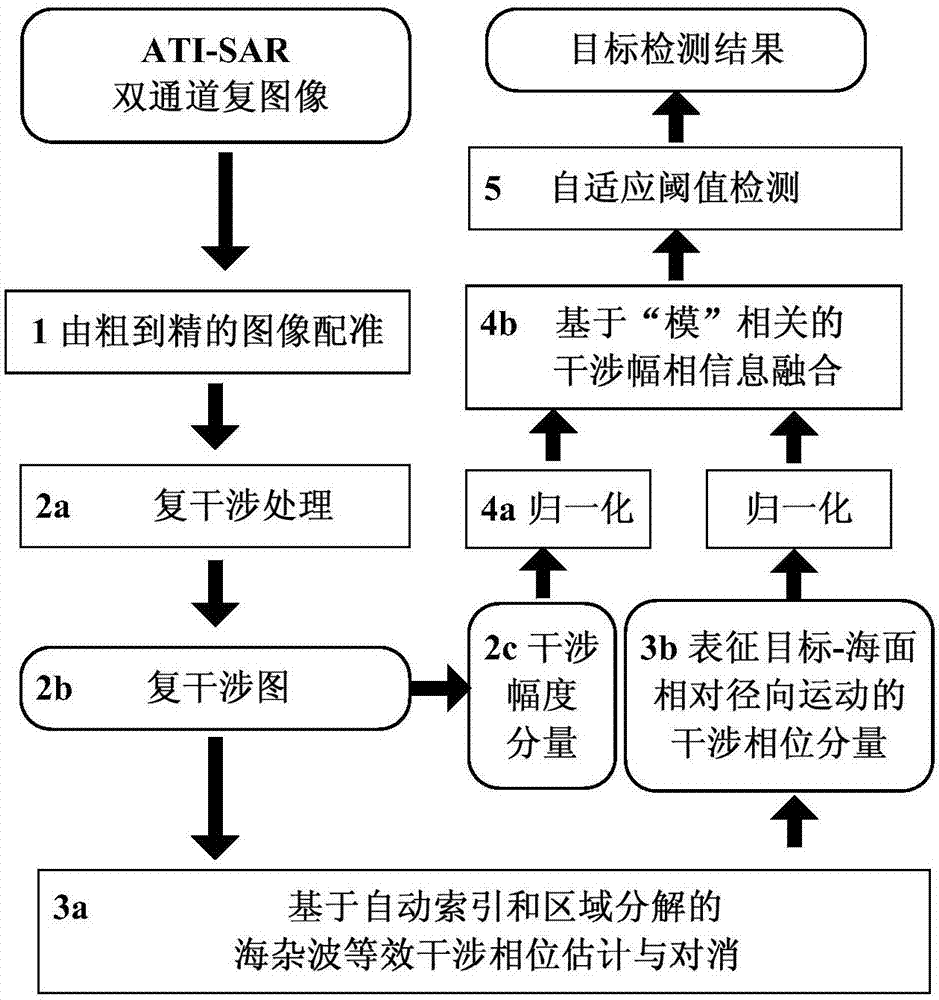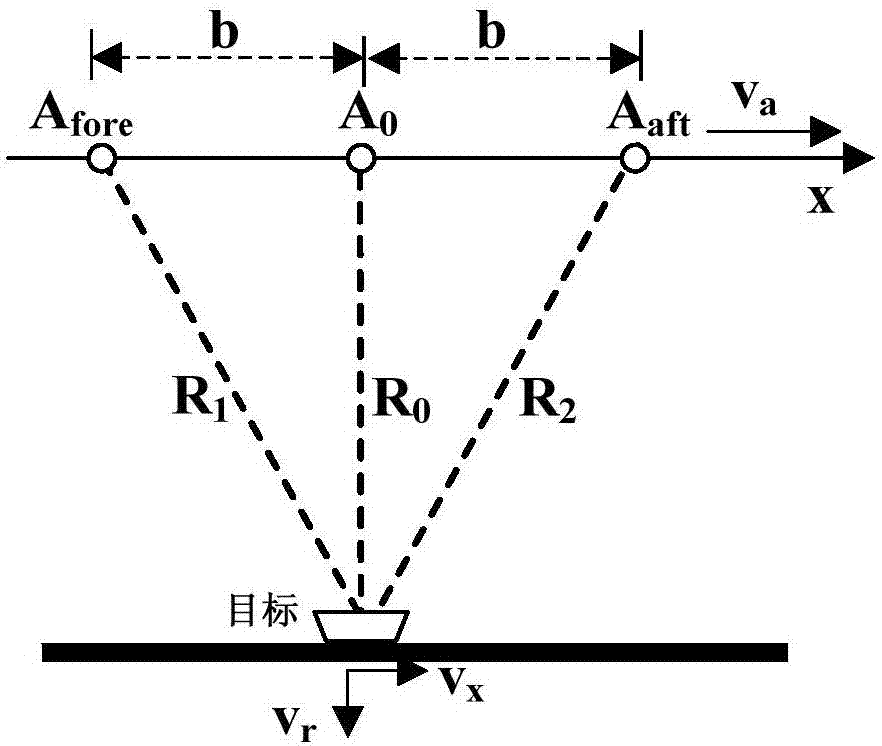Target detection method based on ATI-SAR image amplitude and phase information fusion
A technology of ATI-SAR and target detection, which is applied in the field of target detection based on the fusion of amplitude and phase information of interferometric SAR images along the track, can solve the problems of not considering the randomness of local sea surface motion, not strictly considering the registration of dual-channel images, weakening Target feature strength etc.
- Summary
- Abstract
- Description
- Claims
- Application Information
AI Technical Summary
Problems solved by technology
Method used
Image
Examples
Embodiment Construction
[0064] The present invention will be further described below in conjunction with the accompanying drawings and specific examples.
[0065] The basic flow of the target detection method based on the fusion of ATI-SAR image amplitude and phase information proposed by the present invention is as follows: figure 1 As shown, the specific implementation steps are as follows:
[0066] Step 1: If figure 1 As shown in the middle box 1, the two-channel image registration from coarse to fine
[0067] First, if figure 2 As shown, the offset of the dual-channel complex image obtained by the master-slave ATI-SAR imaging geometry along the azimuth direction is Δx=b, and the phase deviation is ΔΦ=exp(j4πv a bt a / λR 0 ), b is the baseline length, v a is the radar platform speed, t a is the slow time sampling, λ is the wavelength, R 0 is the shortest slant distance between the radar and the target. According to this characteristic, the front-channel image is used as the reference, ...
PUM
 Login to View More
Login to View More Abstract
Description
Claims
Application Information
 Login to View More
Login to View More - R&D
- Intellectual Property
- Life Sciences
- Materials
- Tech Scout
- Unparalleled Data Quality
- Higher Quality Content
- 60% Fewer Hallucinations
Browse by: Latest US Patents, China's latest patents, Technical Efficacy Thesaurus, Application Domain, Technology Topic, Popular Technical Reports.
© 2025 PatSnap. All rights reserved.Legal|Privacy policy|Modern Slavery Act Transparency Statement|Sitemap|About US| Contact US: help@patsnap.com



